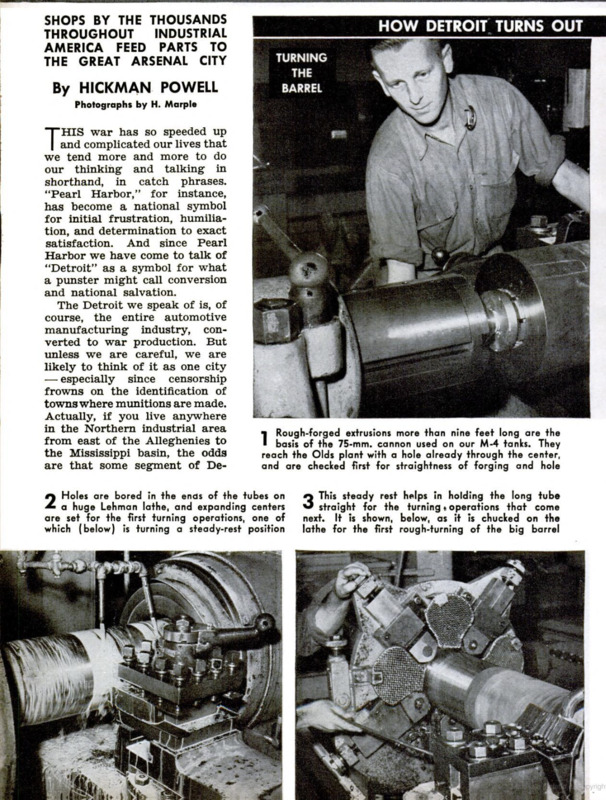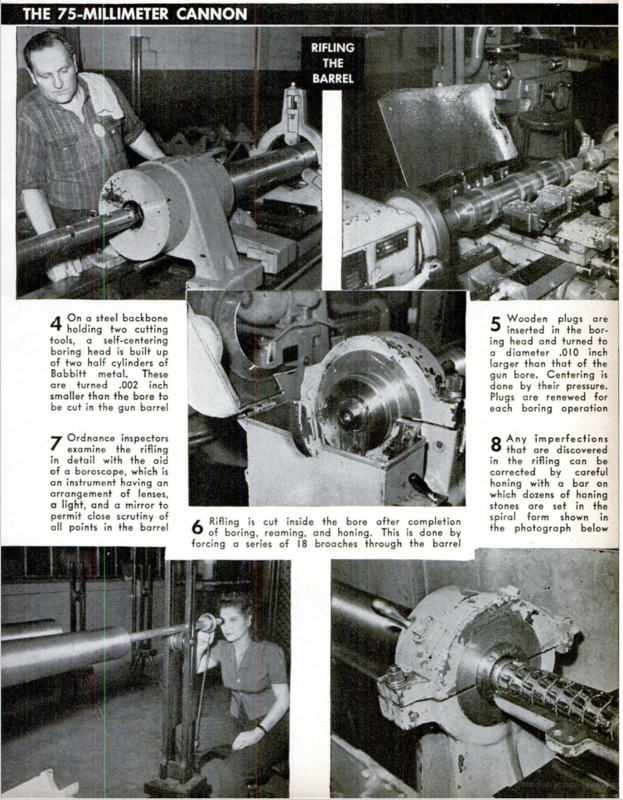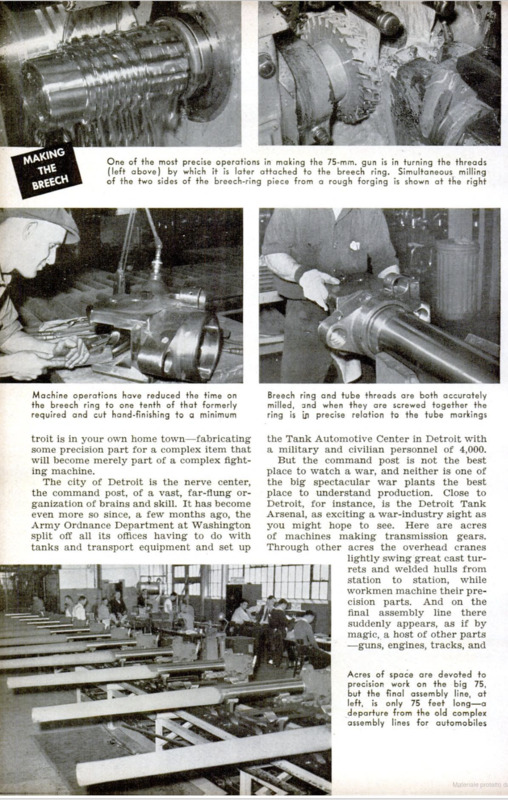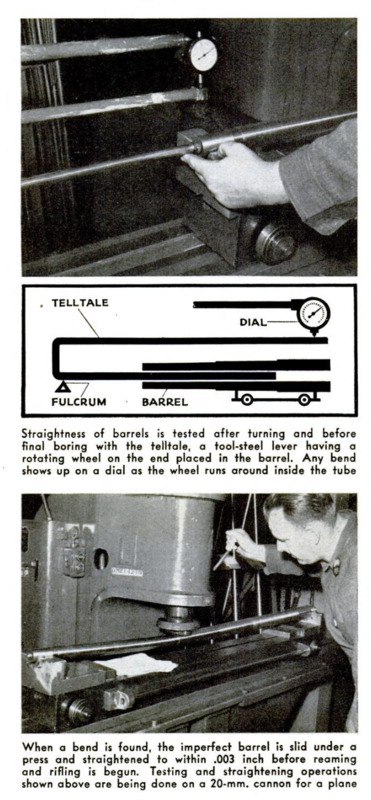-
Title (Dublin Core)
-
Detroit Moves into Your Home Town for Help in Building Guns to Smash the Axis
-
Article Title and/or Image Caption (Dublin Core)
-
Detroit Moves into Your Home Town for Help in Building Guns to Smash the Axis. Shops by the Thousands throughout Industrial America Feed Part to the Great Arsenal City
-
extracted text (Extract Text)
-
HIS war has so speeded up
and complicated our lives that
we tend more and more to do
our thinking and talking in
shorthand, in catch phrases.
“Pearl Harbor,” for instance,
has become a national symbol
for initial frustration, humilia-
tion, and determination to exact
satisfaction. And since Pearl
Harbor we have come to talk of
“Detroit” as a symbol for what
a punster might call conversion
and national salvation.
The Detroit we speak of is, of
course, the entire automotive
manufacturing industry, con-
verted to war production. But
unless we are careful, we are
likely to think of it as one city
— especially since censorship
frowns on the identification of
towns where munitions are made.
Actually, if you live anywhere
in the Northern industrial area
from east of the Alleghenies to
the Mississippi basin, the odds
are that some segment of De-
troit is in your own home town—fabricating
some precision part for a complex item that
will become merely part of a complex fight-
ing machine.
The city of Detroit is the nerve center,
the command post, of a vast, far-flung or-
ganization of brains and skill. It has become
even more so since, a few months ago, the
Army Ordnance Department at Washington
split off all its offices having to do with
tanks and transport equipment and set up
the Tank Automotive Center in Detroit with
a military and civilian personnel of 4,000.
But the command post is not the best
place to watch a war, and neither is one of
the big spectacular war plants the best
place to understand production. Close to
Detroit, for instance, is the Detroit Tank
Arsenal, as exciting a war-industry sight as
you might hope to see. Here are acres
of machines making transmission gears.
Through other acres the overhead cranes
lightly swing great cast tur-
rets and welded hulls from
station to station, while
workmen machine their pre-
cision parts. And on the
final assembly line there
suddenly appears, as if by
magic, a host of other parts
—guns, engines, tracks, and
all the secret inner workings of the turret.
It is an exciting experience to watch these
great, complex engines of war take shape
and roar off to the proving grounds; but you
can’t understand a river by looking at its
mouth. It was with some such thought in
mind that I recently got on a train in Detroit
and rode two hours to take a close look at
what they were doing at the Olds Works of
General Motors.
Olds is a specialist in weapons, in stings
for the hornet, and its various units cover
better than 100 acres. It makes shell casings
for the 75's and 105's by the millions. It
turns out a flood of 20-mm. cannon
for Mustangs and Spitfires, 37-mm.
cannon for Airacobras, and 75-mm.
guns for M-4 tanks. You get
some idea of the rate of production
from the continual, intermittent
roar of aircraft cannon in under-
ground testing tunnels.
Olds first got into war industry
in 1940, turning over its new No. 1
forge plant to the manufacture of
shells. As indicated in some of the
pictures accompanying this article,
this plant is itself something of a
marvel of mass production. Olds
was so successful that it is now op-
erating five great shell forges in
Michigan, Missouri, and Wisconsin,
turning out a fantastic number of
millions of projectiles. But forging
steel shells is a relatively simple
procedure. It was in the precision
work of making guns that Olds met
the real test.
In April, 1941, the Olds Works
first tackled the delicate art of the
gunsmith, and six months later, just
a few weeks before Pearl Harbor,
the first guns came off the assem-
bly line. They were the M-2 version
of the 20-mm. cannon, based on the
British Hispano Suiza, for installa-
tion in the leading edge of a pursuit
plane's wing. As automatic guns
£0, this is relatively simple, for it
needs no aiming mechanism; but
its 115 pounds of steel include 127
parts, each of which must be ma-
chined to the gnat's eyebrow. It
must fire a burst at an average of
600 rounds a minute, and never jam.
To machine that many parts in
mass production would have taken
a vast new plant if Olds had tackled
the job alone. Instead, the company
called in 500 representatives of out-
side shops, showed them blueprints,
specifications, and models of the
127 parts, and asked them what
they could make. The upshot was
that 124 of the 127 parts were
farmed out to other shops—many
of which had never tackled any-
thing so precise and complex be-
fore. Olds set up trouble-shooting
teams of technical and production
men and
sent them from plant to plant to teach
simplified methods for intricate jobs.
“Subcontracting is the auto industry's
middle name,” said S. E. Skinner, general
manager. “We at Olds have made it our
first name as well. Our results have been
excellent and our problems have been no
greater than those we normally encounter
in making automobiles.”
There were problems, of course, some of
them with their humorous aspects. One of
the most difficult subcontracts, involving a
tolerance of only one half of one thousandth
of an inch, was given to a thoroughly compe-
tent tool-making shop in Detroit. When the
parts were delivered, the inspectors found
them more than a thousandth off gauge.
Olds protested. The toolmakers insisted
they were right. But the next delivery
again was off. Belligerently Olds engineers
put the offending parts in a car, took along
their inspection gauges, and drove to De-
troit. Arriving at noon, they went to lunch
with the subcontractor, then returned to
the shop to demonstrate that the parts were
entirely off specifications. Much to their
amazement, when they applied the gauges,
the parts were practically perfect. During
the lunch hour they had lost the chill ac-
quired in transportation from plant to plant.
It was a part that will vary by three thou-
sandths merely from body heat.
Hardly had Olds got under way with |
20-mm. production before Pearl Harbor
changed everything. At Olds, as elsewhere,
automobile production lines were scrapped.
Olds took contracts for 37-mm, and 75-mm.
guns, converted some machinery, brought
in hundreds of new lathes, broaches, and
other precision machines. All its acres are
given over to the turning and assembly of
war's barking tubes of death. But still the
subcontracting technique holds true. On
each of its three major jobs, Olds itself man-
ufactures only three parts.
Take the 87, for instance. Olds makes the
barrel, the tube extension, and the lock
frame. The other parts are made by 68 sub-
contractors in shops scattered over 35 cities
and towns in 10 states of the East and
Middle West. And only 18 of those 68 sub-
contractors were doing business with Olds
in the days of automobile manufacture.
Multiply that by a few thousand times,
remembering that one type of gun is only
one small item among all the infinite variety
of jobs that go to make a plane, a tank, or
any of the other engines of war. The trun-
nion block of the 37-mm. gun, which must
be held within .0005 inch, is being made by a
company that used to make package ma-
chinery for the canning industry.
The acres of floor space at Olds devoted
to making 75-mm. guns had been, in 1941,
a vast assembly line, where men were
putting on wheels, tightening nuts, fitting
fenders—all the partly skilled jobs that auto-
mobile production involves. But today the
assembly line for the 75 gun is only 75 feet
long. Joe Smith, who in 1941 was tighten-
ing tire lugs, today is running a broaching
machine that cuts out the insides of a breech
ring in one tenth of the time it used to take.
Joe Doakes, who used to do rough sheet
metal work, today is doing the delicate ma-
chining of a powder chamber.
There always was precision work in mak-
ing the engines and running gear of auto-
mobiles, but today that precision work and
the number of precision workers have been
multiplied—not only in the main war plants,
but also in thousands of small-town parts
factories. And in the same way, techniques
of management, tricks of production, and
hidden secrets of metallurgy have been
spread through America at a rate we could
not have imagined five years ago.
And while production skills thus multiply
in the gun factory, at a building near by
hundreds of soldiers and sailors every three
weeks are learning the intricate skills of
maintaining the guns, taking them apart
and putting them together blindfolded—
just as thousands of other military men in
other schools are learning the intimacies of
airplane and tank engines and all the other
complex instruments of war. Before the
war America led the world in number of
skilled mechanics. We will have millions
more of better ones after the war.
Bill White, screwing on nuts, never knew
he could run a lathe. Farmer Jones's son
never knew he could doctor an airplane en-
gine. The small town manufacturer never
knew he could make as good a gun part as
the next fellow. The symbolic Detroit sus-
pected, but it did not really know, that it
could convert itself overnight into an in-
vincible armament industry—that it was a
method of organization, planning, and teach-
ing, able to lick any production job.
-
Contributor (Dublin Core)
-
Hickman Powell (writer)
-
H. Marple (photographer)
-
Language (Dublin Core)
-
eng
-
Date Issued (Dublin Core)
-
1943-07
-
pages (Bibliographic Ontology)
-
104-108, 198, 200
-
Rights (Dublin Core)
-
Public Domain (Google digitized)
-
Archived by (Dublin Core)
-
Matteo Ridolfi
-
Alberto Bordignon (Supervisor)
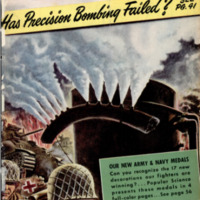 Popular Science Monthly, v. 143, n. 1, 1943
Popular Science Monthly, v. 143, n. 1, 1943

